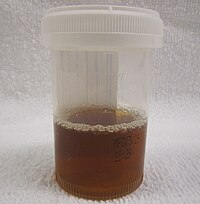
Photo from wikipedia
AbstractLaser-induced breakdown spectroscopy (LIBS) exhibits excellent ability for rapid analysis of potential toxics elements. In this study, LIBS was employed to measure the Cu concentration in contaminated Tegillarca granosa. A… Click to show full abstract
AbstractLaser-induced breakdown spectroscopy (LIBS) exhibits excellent ability for rapid analysis of potential toxics elements. In this study, LIBS was employed to measure the Cu concentration in contaminated Tegillarca granosa. A framework was carefully developed for sample’s preparation and LIBS acquisition. Univariate models based on Cu characteristic spectral lines were validated, but with unsatisfactory performance. Wavelengths’ loadings and weightings of partial least square (PLS) model exhibited the most uninformative background, while they were selected by the supervised general variable selection methods that showed success in near-infrared spectroscopy. Thus, a strategy for clustering variables by their similar characteristics was proposed to screen the informative wavelengths using the unsupervised Kohonen self-organizing map (SOM). The PLS and least square support vector machine (LSSVM) models were calibrated based on these clustered units using the optimized parameters for the SOM network. LSSVM model exhibited the best performance based on the C3 × 3(2,2) variables with correlation coefficient of prediction of 0.906, as well as root mean squared error of prediction of 19.62 mg kg−1. SOM could more effectively cluster wavelengths from the complex LIBS spectrum than general variable selections, which have been proven their success in near-infrared spectra but fail in the LIBS spectra. Results indicated LIBS coupled with SOM-LSSVM calibration method could be used to quantitatively evaluate the potential toxics element Cu concentration in shellfish Tegillarca granosa. This study can be a good reference for screening the informative variables and measurement of other constituents in LIBS spectra. Graphical Abstractᅟ
Journal Title: Food Analytical Methods
Year Published: 2017
Link to full text (if available)
Share on Social Media: Sign Up to like & get
recommendations!